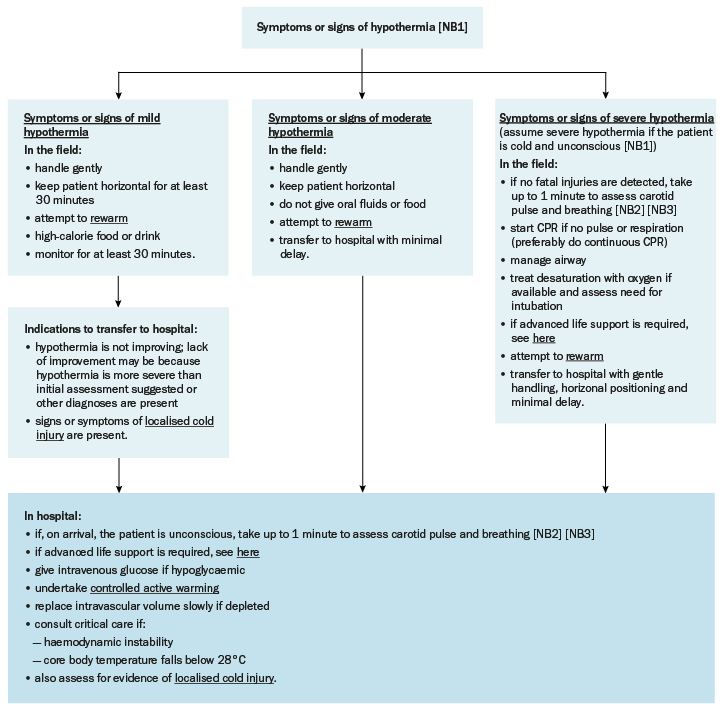Approach to management of hypothermia
A mildly hypothermic patient may not require transfer to hospital, if no injuries (including localised cold injury) are present and the person is alert (ie Glasgow Coma Scale score of 15) after a period of care, with at least 30 minutes of lying horizontal and rewarming.
Patients with moderate or severe hypothermia need hospitalisation, and may require intensive care.
Seek early expert advice on the management of all critically ill patients, including indications for transfer to a tertiary centre that offers extracorporeal membrane oxygenation (ECMO).
If a patient with hypothermia has a traumatic injury, preventing further core temperature drop is an essential component of early trauma intervention as hypothermia can worsen trauma outcomes.

CPR= cardiopulmonary resuscitation.
NB2: Cardiac output may be difficult to detect; chest compressions in a person with a cardiac output can cause arrhythmias.
NB3: CPR is contraindicated if conditions are unsafe for the rescuer or if the person has a fatal injury (including avalanche asphyxiation by snow packing an airway or an ice mask obstructing it).
